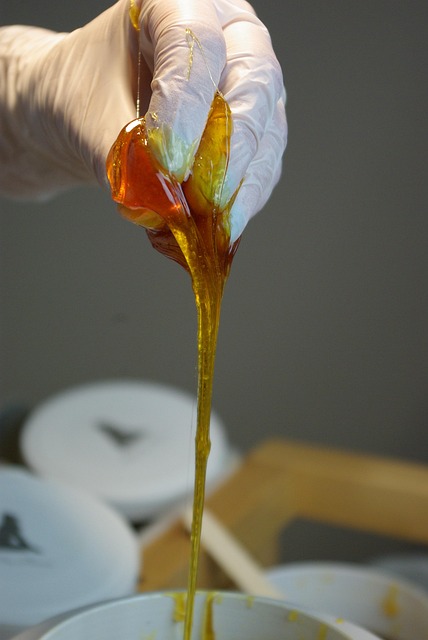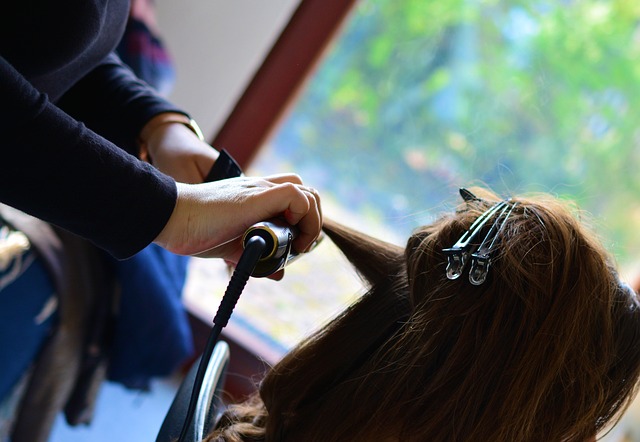Permanent Hair Removal offers a revolutionary solution to unwanted hair, using advanced technologies like lasers and IPL to target follicles. Unlike temporary methods, these techniques provide lasting results, reducing time spent on treatments. With tailored approaches based on skin and hair characteristics, permanent hair reduction is achievable for all. Prioritizing safety, proper preparation, and post-care ensures optimal outcomes, addressing concerns about side effects and pain. Adopting permanent hair removal methods saves time, reduces irritation, enhances confidence, and promotes self-acceptance.
Looking for lasting solutions to hair removal? Discover the world of permanent hair removal, a game-changer for achieving smooth, hair-free skin. This comprehensive guide explores traditional methods, the science behind permanency, and diverse techniques. Learn about safety, preparation, post-treatment care, and addressing concerns. Uncover benefits, lifestyle adjustments, and long-term strategies for effective, sustainable results in permanent hair removal.
Understanding Traditional Hair Removal Methods

Hair removal is a common concern for many, and throughout history, various methods have been employed to achieve smooth skin. Traditional techniques include shaving, waxing, threading, and laser treatments. These methods offer temporary solutions as hair grows back over time. Shaving, for instance, removes the hair’s visible tip, but the root remains intact, leading to regrowth within days or weeks. Waxing and threading target the hair follicle, delaying regrowth but not permanently halting it.
In contrast, Permanent Hair Removal offers a lasting solution by targeting the hair follicle’s roots. This method utilizes advanced technologies like laser or intense pulsed light (IPL) to destroy the follicles, inhibiting future hair growth. It provides a significant time-saving advantage over traditional methods, reducing the need for frequent treatments.
The Promise and Science Behind Permanent Hair Removal

The promise of permanent hair removal has captivated humans for centuries, and modern science is closer than ever to making this a reality. Traditional methods like shaving, waxing, or laser treatments offer temporary solutions, but permanent hair removal aims to change the game by targeting the root cause: the hair growth cycle.
Science behind permanent hair removal involves understanding the intricate relationship between hair follicles, melanin production, and the cellular mechanisms that drive hair growth. Advanced technologies, such as intense pulsed light (IPL) or targeted laser treatments, precisely penetrate the skin to disrupt the follicle’s ability to produce hair. These methods aim to damage or destroy the hair follice, preventing future hair growth. The science behind permanent hair removal is an ongoing field of study, with continuous innovations pushing the boundaries of long-lasting and effective solutions for unwanted hair.
Different Techniques for Long-Lasting Results

Achieving long-lasting hair removal has led to a plethora of techniques, each promising permanent hair reduction. Among them, laser hair removal stands out for its ability to target specific pigment and hair follicles, offering lasting results over time. This procedure involves multiple sessions, where concentrated light is absorbed by the hair, damaging the follicle and inhibiting future growth.
Other popular methods include intense pulse light (IPL) therapy, which uses a broad spectrum of light to target pigmentation, and electrolysis, a process that destroys hair follicles with tiny electrical currents. Each technique has its unique advantages and may suit different individuals based on factors like skin type, hair color, and desired results. Permanent hair removal is no longer a distant dream; these advanced methods offer effective solutions for those seeking long-term freedom from unwanted hair.
Safety and Efficacy Considerations

When considering long-lasting or permanent hair removal methods, safety and efficacy should be at the forefront of your mind. Unlike temporary solutions that require frequent reapplications, procedures like laser hair removal or electrolysis aim to permanently reduce unwanted hair growth. However, it’s crucial to understand potential side effects and risks associated with each method.
Safety considerations include ensuring qualified and experienced professionals perform the procedure, using approved equipment, and adhering to recommended guidelines. Efficacy varies across individuals based on factors like skin type, hair color, and thickness. Consulting with a dermatologist or certified specialist can help determine the most suitable permanent hair removal technique for your specific needs, minimizing both risks and maximizing results.
Preparing Your Skin for Treatment

Preparing your skin for permanent hair removal is a crucial step in achieving smooth, hair-free results. The week leading up to treatment should focus on deep cleansing and exfoliation to unclog pores and ensure your skin is clear of any impurities. This process helps prevent potential skin irritation during and after the procedure.
Exfoliate gently but regularly to remove dead skin cells, allowing the permanent hair removal solution to penetrate effectively. Additionally, stay hydrated by drinking plenty of water, as well as avoid sun exposure and excessive sweating, which can impact your skin’s sensitivity. Remember, a healthy, well-prepared skin surface is key to successful and long-lasting permanent hair removal.
Post-Treatment Care and Maintenance

After undergoing any form of permanent hair removal treatment, proper post-care and maintenance are essential to ensure optimal results. The first few days following the procedure require extra attention as your skin adjusts to being free from unwanted hair. It’s crucial to keep the treated area clean and moisturized; gentle cleansing with a mild soap and cool compresses can help soothe any discomfort or irritation. Avoid strenuous activities, excessive sun exposure, and hot tubs/saunas during this period to prevent potential sensitivities.
Regular maintenance is key to longevity of the results. Depending on the method used, touch-up sessions might be necessary every few months to maintain smooth, hair-free skin. Following your technician’s aftercare instructions carefully will ensure a successful transition to your new, smooth-skinned self. Using suitable skincare products and avoiding certain irritants can also contribute to overall skin health and the longevity of your permanent hair removal results.
Addressing Common Concerns and Side Effects

When considering permanent hair removal methods, it’s natural to have concerns about potential side effects and pain. One common worry is irritation or redness at the treatment site, but these symptoms are usually temporary and manageable. It’s important to remember that every individual’s experience is unique; some may require multiple sessions for optimal results, while others might achieve long-lasting smoothness with fewer treatments.
Another aspect to consider is the potential risk of infection or skin damage. To mitigate these risks, always opt for qualified professionals using sterile equipment. Additionally, following post-treatment care instructions diligently can help ensure a smooth healing process. Permanent hair removal offers a convenient and effective solution, but it’s crucial to be informed about the possibilities and take proactive steps to address any concerns.
Benefits and Lifestyle Changes for Sustainable Results

Opting for permanent hair removal methods can significantly impact your daily routine and overall lifestyle, leading to more sustainable results. One of the key benefits is the reduction in time spent on personal grooming. Without the need for frequent shaving or waxing, individuals can save valuable minutes each day, allowing them to focus on other aspects of their life and well-being. This change can foster a sense of freedom and efficiency, especially for those with busy schedules.
Additionally, permanent hair removal solutions offer long-lasting comfort. By eliminating the irritation and discomfort associated with traditional methods, users can experience greater confidence in social and professional settings. These changes extend beyond convenience; adopting a permanent hair removal strategy encourages individuals to embrace their natural beauty, fostering self-acceptance and a positive body image.
